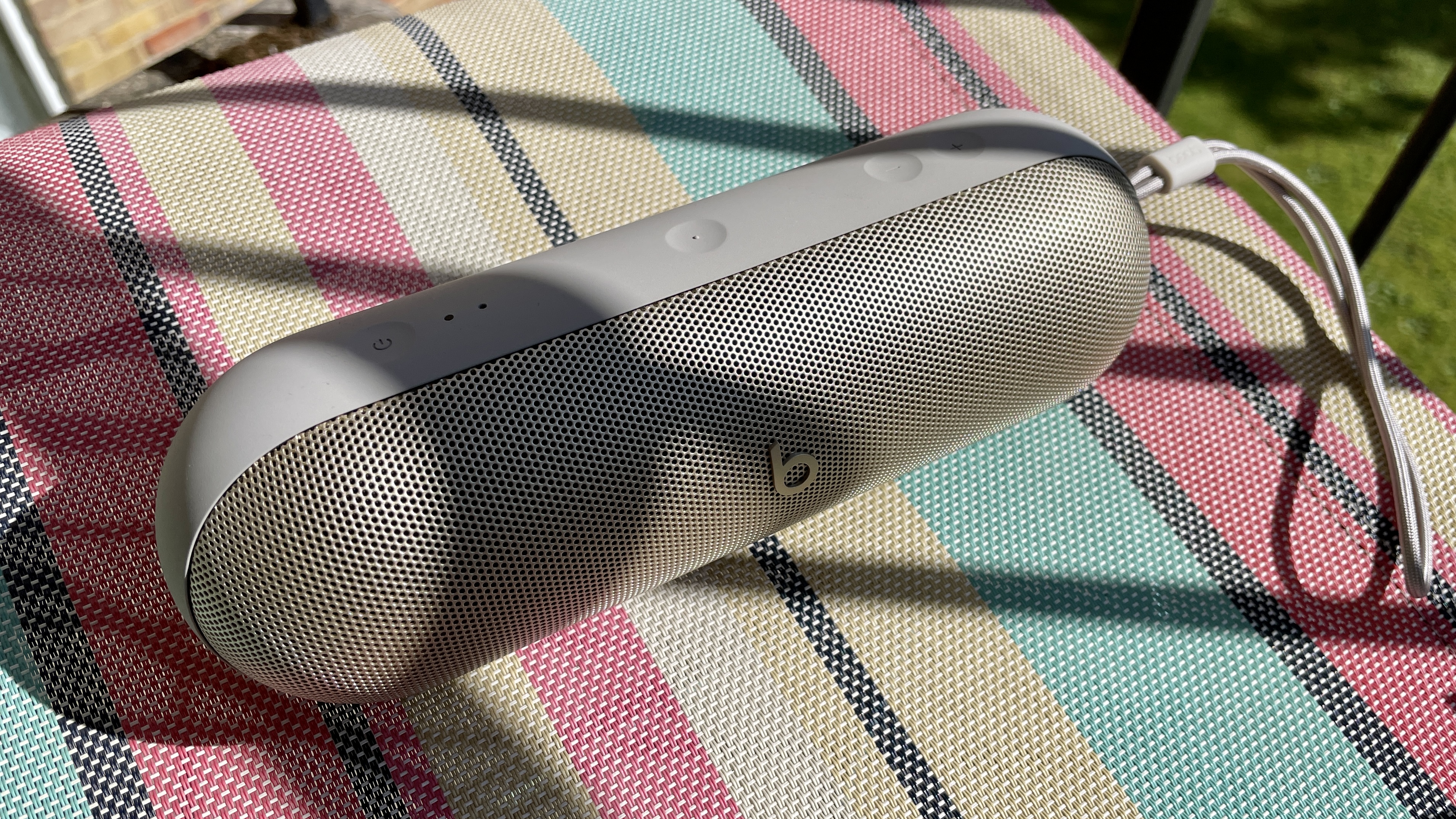
The Pill is back! Beats' 2012 capsule creation was long overdue an update, wasn't it? Yes, Apple's Beats-branded Bluetooth speaker has been through several iterations in the 12 years since its debut, but even the most recent of those was back in 2015 (and was discontinued by Apple in January 2022). This left a gaping hole in the Bluetooth speaker space. Cut to June 25, 2024, and, following a few careful and thoroughly on-brand celeb leaks, a 2024 Beats Pill finally dropped. And it's cheaper than it was in 2012! But let's not get ahead of ourselves – pricing comes later.
Is the new Beats Pill worthy of a spot in our best Bluetooth speakers buying guide? In so many ways, yes. Right off the bat: the glow-up has worked – it looks great. It's rounder and more tactile: there's a sense of pride in carrying it around. It feels as if it should have a Bang & Olufsen plate on its metal grille and be far more expensive than it is.
It sounds really good for its size too. This is thanks in no small part to the reworked acoustic architecture under the hood: there's a new single and totally reengineered racetrack woofer (the 2015 Beats Pill+ featured a dual woofer design), helped by stronger neodymium magnets. Apple says the 2024 Beats Pill can drive 28% more motor force to "displace 90% more air volume" and while I don't have a Pill+ to hand to test that claim, I can tell you that the Pill sounds much bigger and more spacious that it's hotdog-esque dimensions would lead you to imagine. It easily provided the tunes for a gathering of six people.
The high notes are handled by a redesigned solo tweeter (again, just the one, not the two you'd find in the older Plus model) secured in its own housing and the entire array – and metallic grille surrounding it – is now angled up by 20 degrees, so its improved output hits you in the right way. This Pill is also 10% lighter than the last one since Beats has managed to knock 68g / 2.4oz off the weight.
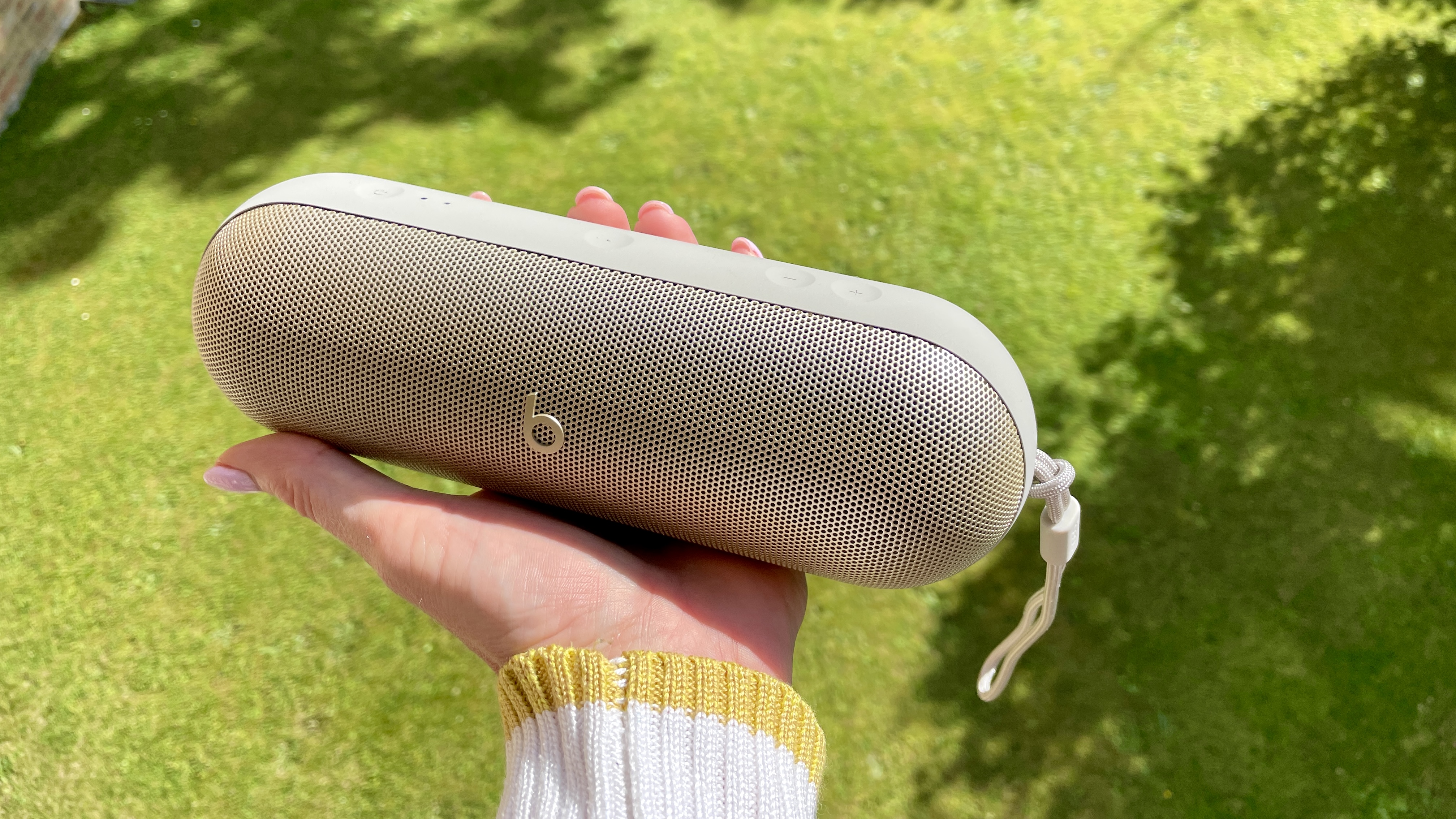
Let's get to the sound first: it's good. The Beats Pill's enviable sonic chops are the reason it gets four stars. The bongo drums at the start of Shed Seven's Dolphin (from a nice Flac file on my laptop via USB-C for better-than-Bluetooth audio – more on this later) start off every bit as quiet as they should, building to Rick Witter's crisp, energetic and nuanced vocal. Jangly guitars, driving bassline and Alan Leach's uncompromising drum fills are all given due diligence in a cohesive mix that still lets those bongos shine as the track intensifies.
John Frusciante's Omission, from Shadows Collide with People celebrates every supplementary musical passage with zeal and finesse even over Bluetooth 5.3 (and even though only SBC and AAC are supported, so no higher-res codecs). The track's tambourine, female backing vocals, synth, keys and percussion are not only revealed but expertly showcased with texture, in a soundstage that I can only describe as reverent. The album continues to Shift Sync and I'm happy to note a healthy and head-noddingly accurate bass thump from the Beats Pill, too.
OK, if you're prepared to pay about $30 more for the JBL Charge 5 (and prepared to cart around something that's 332g heavier, or slightly more than a bag of flour) you'll get a sound that's a touch meatier, broader and dynamically agile through the rise and fall of each note. However, the 2021-release JBL is neither as premium-looking nor as perfectly portable, and the Charge 5's 20 hours of playtime is beaten by the Pill's 24-hour stamina. Also, the Pill can be used as a speakerphone during calls, which is a feature I really like and one that seems to be dying out – the JBL Charge 5, for one, has no built-in mic so can't do it.
Where the JBL model has the upper hand, though, is when it comes to daisy-chaining multiple speakers from its family via the PartyBoost function. Your options for beefing up the Beats Pill's audio is to pair two of them, in either 'Amplify' or 'Stereo' modes – ie. mono or stereo. So if you had visions of purchasing eight or so perfectly paired Pills to dot around your home, you'll be disappointed.
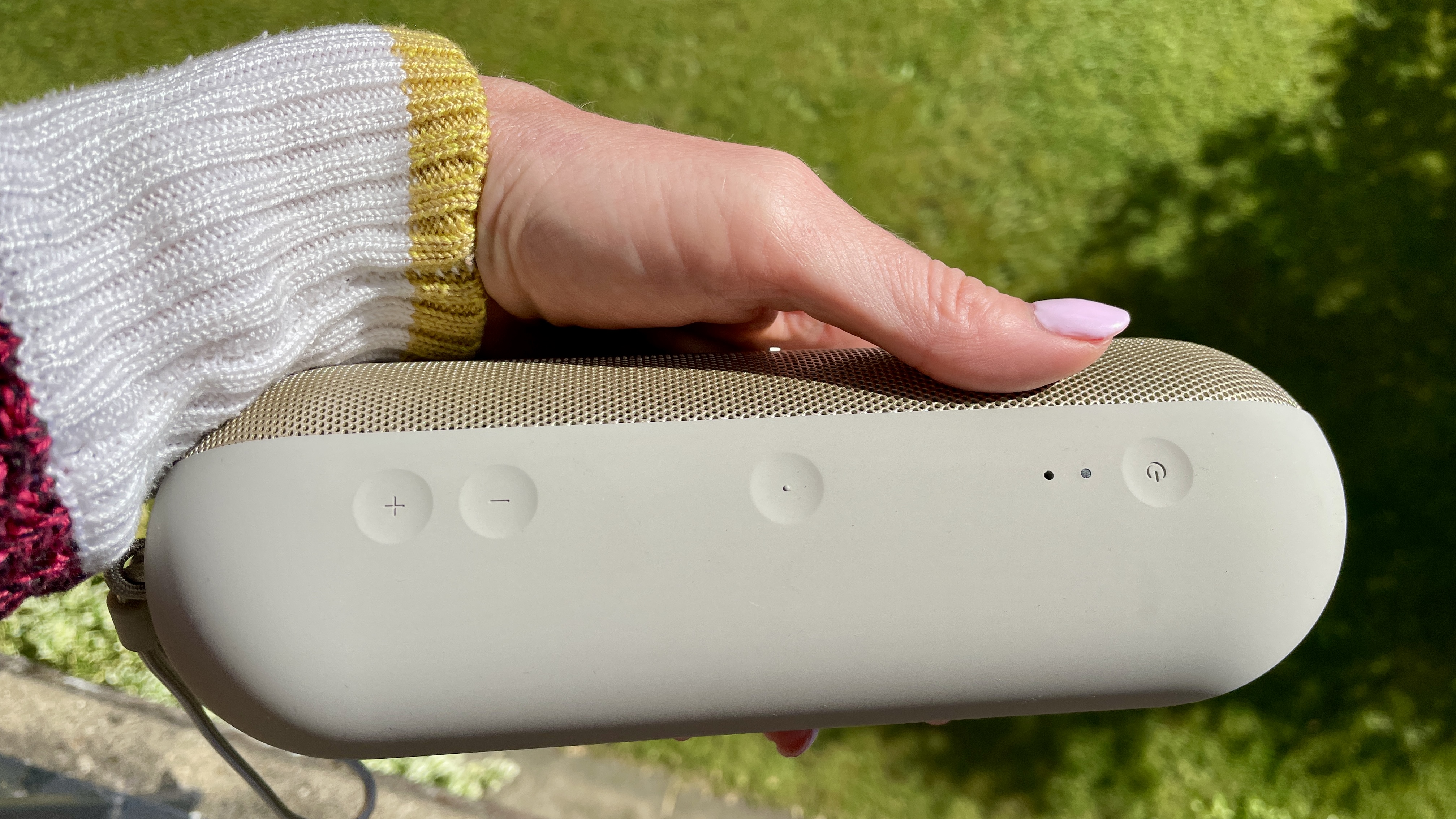
The Pill supports super-snappy one-touch pairing on both Android and iOS now, plus Find My (on iOS) or Find My Device (Android). Instructions on setting this up can be found by scanning the QR code supplied in the packaging, but a dedicated app might have been an idea on iOS. This is an Apple product in a Beats jacket, so certain Apple ecosystem perks (iCloud pairing to any device within your iCloud account, audio hand-off to your Apple Watch if your iPhone dips out of range) are here.
The thing is, there's no dedicated EQ tab or way to check for remaining juice in the Pill other than by pressing the power button quickly (more on this incoming), which makes a picture of the Pill pop up on my iPhone with a battery life percentage. That said, I like that once paired, my iPhone's volume slider becomes Beats-branded.
For extra usability bits and pieces on Android, you're directed to the Beats app (requires Android 8.0 or later). For iPhone and iPad users, Beats clearly feels its integration with iOS gets the job done. I'm not sure it's a great decision, though I accept that AirPods don't have a dedicated app on your iPhone either, and, let's face it, they're rather popular.
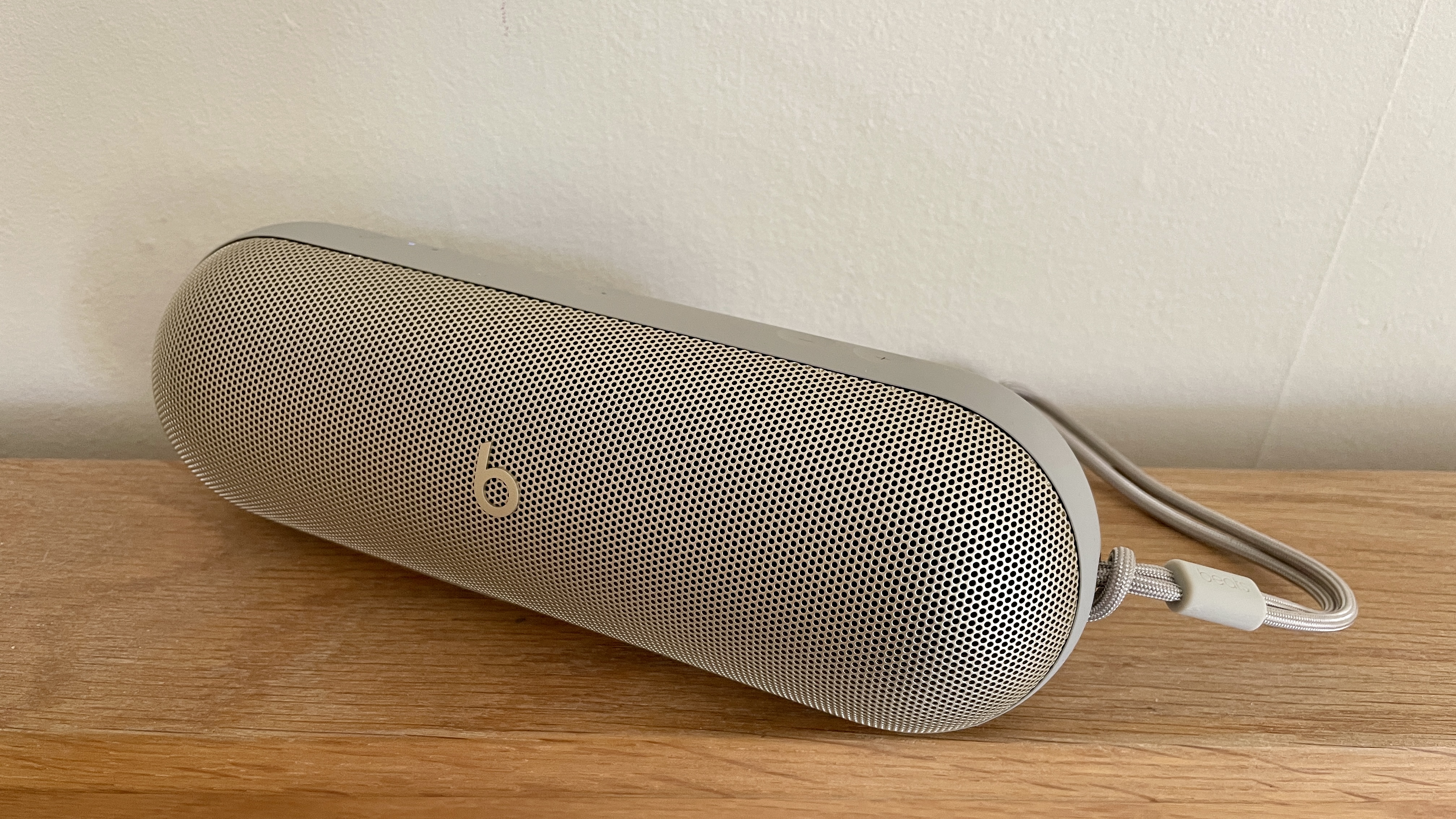
The big ace up the Pill's sleeve is that you can use the included USB-C charging cable to charge other portable devices from the Pill, or to enjoy lossless audio from your laptop, phone, or other digital music sources. It's a great USP if you value audio quality. However, it leads me on to my main gripe with the Beats Pill. Look at its top plate and you'll see just four buttons: two for volume, a power/pairing button and a central button. That's simply not enough buttons – especially when you remember there's no iOS app to speak of.
Let me explain. The power button alone has no fewer than six functions, three of which involve holding it down for a different number of seconds, to make the Pill take effect (as it were). A fourth involves holding it down while simultaneously plugging it into another device quickly (!) so it doesn't think you mean something else. You need to hold the power button down for 0.8 seconds or less to check the battery; more than 0.8 seconds but less than 3 seconds to turn it on or off; more than 3 seconds to initiate pairing. Holding the button down while simultaneously plugging its USB-C port into a source device (which, again, you must do quickly and decisively) should initiate USB-C audio.
You know what I'm going to say. I often initiated Bluetooth pairing when I meant to turn it off. This is because, after a few presses that didn't register for more than 0.8 seconds, I got a little more heavy-handed and overcooked it. And USB-C audio was only achieved after several attempts where once again, the Pill thought I wanted to initiate pairing rather than hook up a wired connection to my laptop. There's no dedicated 3.5mm port on the Pill and I couldn't get the USB-C cable to work with a 3.5mm dongle to a set of headphones, or a Lightning dongle to my iPhone 12 Pro on the other end of the cable, so it really is true USB-C to USB-C only.
The Pill's central button handles playback in the usual way (one press for play/pause, two to skip, three to go back) but also can be long-pressed at the same time as the central button on another Pill, to pair them. I didn't test this since I only had one review sample, but again, an app where you see the paired speaker (and what, in which mode, it's connected to) would have helped here.
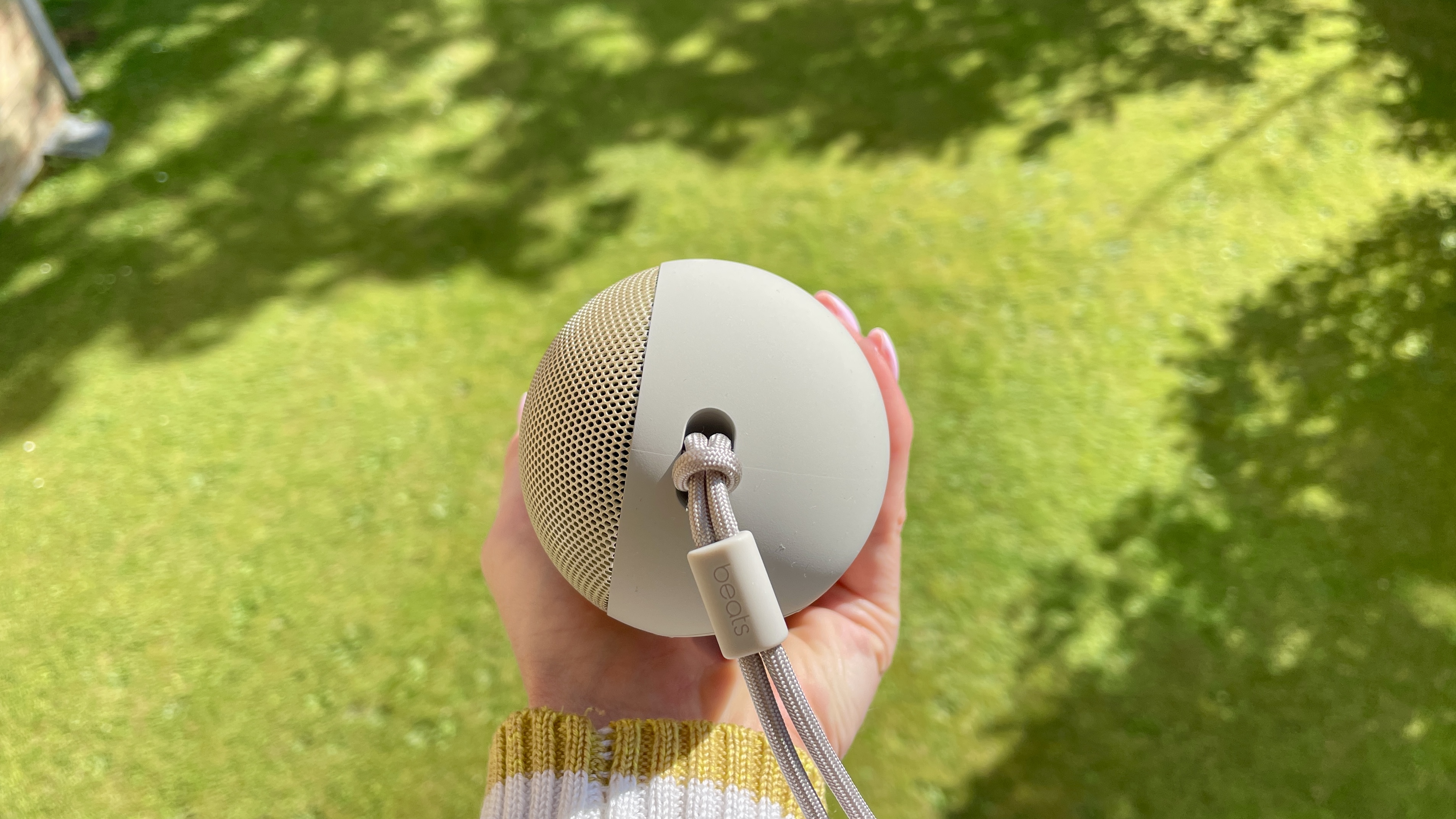
For the money, which is $149.99 / £149.99 / AU$249 (ie. $50 less than the 2012 original) I need you to know that this is a great-sounding, great-looking, well-featured Bluetooth speaker that, thanks to its IP67 rating, is also one of the best waterproof speakers I've tested for sound.
For me, its dimensions and aesthetic (available in Red, Black, or this gorgeous beach-ready 'Champagne Gold' hue) are quite beautiful and I took greater pride in producing it from my bag than I did many of the similarly-priced, 'rugged' and fabric-jacketed rival speakers I've tested to date. If you're a fan of the Bang & Olufsen Beosound A1 (2nd Gen) or slightly newer Beosound Explore for looks and sound, you'll love the Beats Pill.
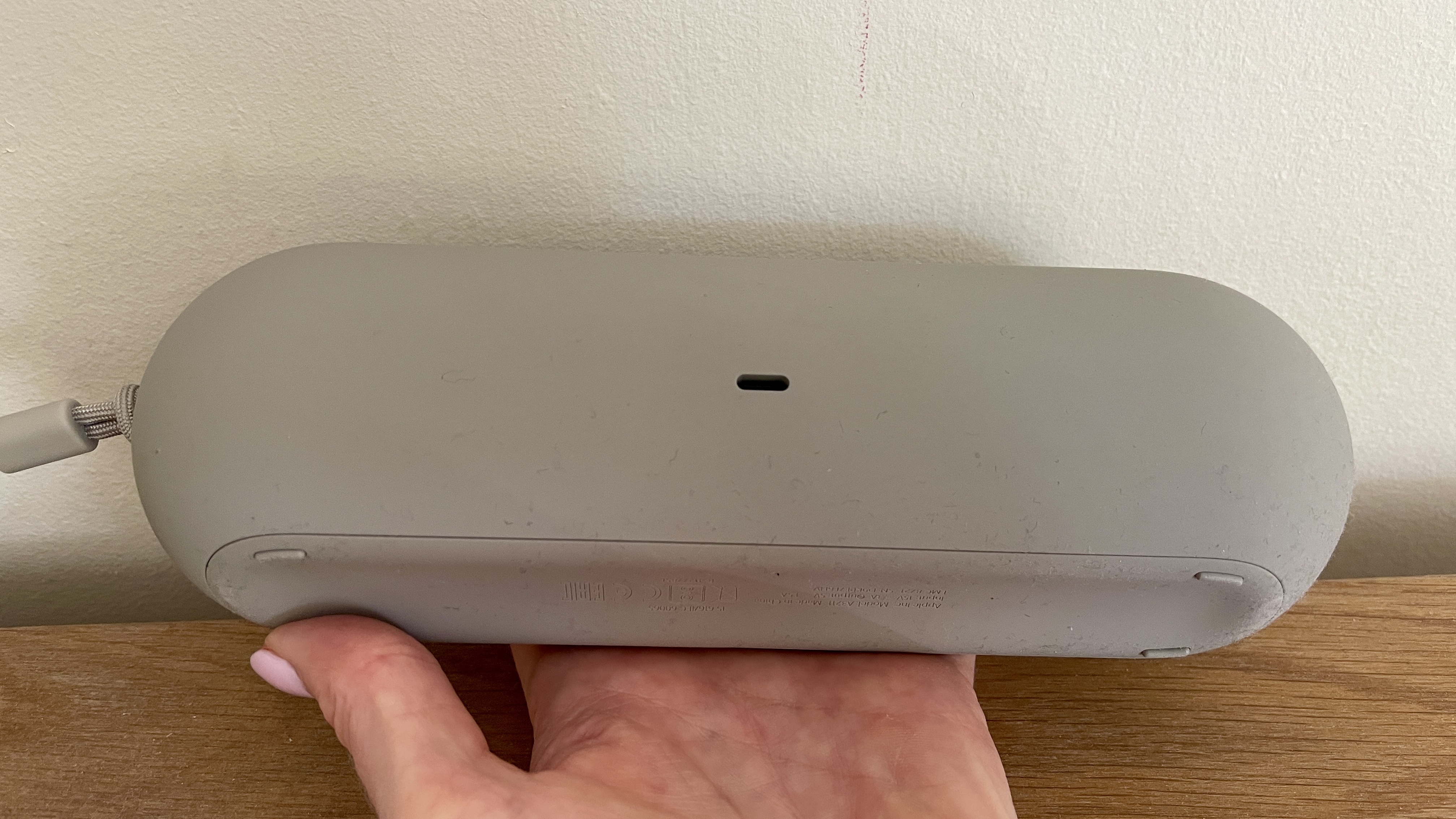
Beats Pill review: Price and availability
- Priced $149.99 / £149.99 / AU$249
- Released June 25, 2024
The Beats Pill officially arrived on June 25, having been artfully teased in the weeks beforehand. That price pleasantly surprised me since, well, this is still Apple and the 2012 inaugural model cost $50 more.
Competition is the key driver there, obviously – there's a lot of it about in 2024. For looks, its closest rival is the excellent – but older and significantly more expensive – May 2020-issue Bang & Olufsen Beosound A1. For size and relative newness, you might look to the May 2024-release Sonos Roam 2, which costs $30 / £30 / AU$50 more. That speaker will also hook up to your Sonos system, but it only has a battery life of 10 hours compared to the Beats' 24 hours. Lastly, the JBL Flip 6 can now be yours for around $109 / £99 / AU$169 because it's a 2022 product – and we like it a lot. The downside is that although the Flip offers multiple-speaker PartyBoost connectivity, it's 'just' a Bluetooth speaker otherwise. You don't get the speakerphone capability, ability to charge other devices, or USB-C audio passthrough you get with the Beats Pill.
Beats Pill review: Specs
Should I buy the Beats Pill?
Buy it if...
Don't buy it if...
Beats Pill review: Also consider
How I tested the Beats Pill
- Tested the speaker for over two weeks
- Listened over a wired USB-C connection to a Mac and via Bluetooth to iPhone
- Tested in a variety of spaces and over calls, to test the speakerphone chops
I tested the Beats Pill for over two weeks. As is our way at TechRadar, I listened to the TechRadar testing playlist, which includes various hi-fi certified testing tracks (think complex instrumentals, thumping basslines and ethereal vocals), plus my own ever-changing playlists. These span everything from tried-and-tested Joni Mitchell favorites to Eminem's new album because why not? Music, too, is ever-evolving – as are we.
The bulk of my testing was done using my iPhone 12 Pro (yes, I'm still using a Lightning port – but so many of us are!) and my MacBook Pro, which helped me better test it for the iOS ecosystem user.
Oh, and because I'm committed to the cause, I tested that 24-hour battery life claim at 50% battery. How did I sleep? Intermittently, although I had placed the Beats Pill in a cupboard in my apartment, as far from my bed as possible. I even lined said cupboard with a few pillows. It was still playing 23 hours after my battery test began. I was impressed… a little tired, but impressed.
- First reviewed: July 2024
- Read TechRadar's Reviews Guarantee







